Showing Spotlights 1073 - 1080 of 2876 in category All (newest first):
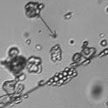 While 'conventional' water contaminants can be cleaned up by state-of-the-art technologies with filtration and condensation processes, this is not the case for nanoscale pollutants. Researchers have demonstrated that water contaminated with nanomaterials can be cleaned up by a 'hand shaking' approach that can be performed even in a kitchen. This simple technique can be used for many one-dimensional and two-dimensional nanomaterials including nanotubes, nanowires, graphene, and nanosheets.
While 'conventional' water contaminants can be cleaned up by state-of-the-art technologies with filtration and condensation processes, this is not the case for nanoscale pollutants. Researchers have demonstrated that water contaminated with nanomaterials can be cleaned up by a 'hand shaking' approach that can be performed even in a kitchen. This simple technique can be used for many one-dimensional and two-dimensional nanomaterials including nanotubes, nanowires, graphene, and nanosheets.
Nov 25th, 2015
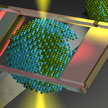 Catalytic nanoparticles play a crucial role in accelerating chemical reactions by offering their active sites and surfaces. Fine-tuning their surface structure during synthesis and phase transformations can enhance their catalytic activity and durability by manifolds. However, control and feedback on the synthesis/transformation studies demand characterization techniques that can provide structural and compositional information on the atomic level.
Catalytic nanoparticles play a crucial role in accelerating chemical reactions by offering their active sites and surfaces. Fine-tuning their surface structure during synthesis and phase transformations can enhance their catalytic activity and durability by manifolds. However, control and feedback on the synthesis/transformation studies demand characterization techniques that can provide structural and compositional information on the atomic level.
Nov 24th, 2015
 The two major problems with lithium-sulfur batteries stem from the intrinsic inert reaction kinetics of sulfur redox and the unique 'shuttle' mechanism described as that soluble intermediates - polysulfides consisting of lithium-terminated sulfur-chains - diffuse between the cathode and anode, thus being consumed within the battery instead of being utilized. To solve these issues and to improve battery performance relies on not only the electrode materials but also other cell components such as the separator.
The two major problems with lithium-sulfur batteries stem from the intrinsic inert reaction kinetics of sulfur redox and the unique 'shuttle' mechanism described as that soluble intermediates - polysulfides consisting of lithium-terminated sulfur-chains - diffuse between the cathode and anode, thus being consumed within the battery instead of being utilized. To solve these issues and to improve battery performance relies on not only the electrode materials but also other cell components such as the separator.
Nov 23rd, 2015
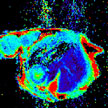 Imagine the possibility of non-invasive, non-radiation based Magnetic Resonance Imaging (MRI) in combating cardiac disease. Researchers are developing a process that would use nanotechnology in a novel, targeted approach that would allow MRIs to be more descriptive and brighter, and to target specific organs. By using nanoparticle-based MRI positive contrast agents, you can specifically target different tissues or organs, you can control active component loading, and you can generate bright or hyperintense anatomical view of the tissue.
Imagine the possibility of non-invasive, non-radiation based Magnetic Resonance Imaging (MRI) in combating cardiac disease. Researchers are developing a process that would use nanotechnology in a novel, targeted approach that would allow MRIs to be more descriptive and brighter, and to target specific organs. By using nanoparticle-based MRI positive contrast agents, you can specifically target different tissues or organs, you can control active component loading, and you can generate bright or hyperintense anatomical view of the tissue.
Nov 11th, 2015
 The capture silk used in spider webs consists of axial fiber coated with glue droplets at regular intervals. The spider glue has a unique property that its adhesion is humidity responsive such that for some species the adhesion keeps on increasing up to 100% relative humidity. This is unlike synthetic adhesives that fail under humid conditions. From a polymer science perspective, researchers are interested in understanding the principle behind humidity responsive adhesion of spider glue to create adhesives that work in high humidity conditions.
The capture silk used in spider webs consists of axial fiber coated with glue droplets at regular intervals. The spider glue has a unique property that its adhesion is humidity responsive such that for some species the adhesion keeps on increasing up to 100% relative humidity. This is unlike synthetic adhesives that fail under humid conditions. From a polymer science perspective, researchers are interested in understanding the principle behind humidity responsive adhesion of spider glue to create adhesives that work in high humidity conditions.
Nov 10th, 2015
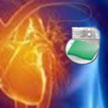 Adding to the options for wirelessly powering implants from outside the body, researchers are proposing a light-driven powering device using near infrared rays (nIR). Flashing light impulses, which are absorbed by the device, induce temperature fluctuation, thus generating voltage/current pulses which can be used for charging a battery or biological stimulations. This flexible and compact device can generate electrical pulses with controllable amplitude and width when remotely irradiated by nIR. Not only can it supply power to implantable bioelectronics, but it also provides adjustable electrical pulses for nerve stimulation.
Adding to the options for wirelessly powering implants from outside the body, researchers are proposing a light-driven powering device using near infrared rays (nIR). Flashing light impulses, which are absorbed by the device, induce temperature fluctuation, thus generating voltage/current pulses which can be used for charging a battery or biological stimulations. This flexible and compact device can generate electrical pulses with controllable amplitude and width when remotely irradiated by nIR. Not only can it supply power to implantable bioelectronics, but it also provides adjustable electrical pulses for nerve stimulation.
Nov 6th, 2015
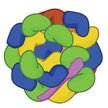 Previous reports have shown that when nanoparticles enter the blood stream, the proteins that adsorb onto nanoparticles when they enter the body form a protein corona that hinders interactions between the targeting ligands on the nanoparticles and their binding partners on the cells' surface. To address this issue, scientists have developed a strategy that enables directing the formation of protein coronas on nanoparticles that are enriched in plasma proteins with natural targeting capabilities.
Previous reports have shown that when nanoparticles enter the blood stream, the proteins that adsorb onto nanoparticles when they enter the body form a protein corona that hinders interactions between the targeting ligands on the nanoparticles and their binding partners on the cells' surface. To address this issue, scientists have developed a strategy that enables directing the formation of protein coronas on nanoparticles that are enriched in plasma proteins with natural targeting capabilities.
Oct 28th, 2015
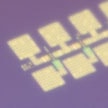 Rollable displays and other flexible, stretchable electronic systems are often enabled by the successful integration of nanostructured materials. Most commercially available flexible electronic circuits and devices are fabricated on flexible plastic substrates, such as polymeric amides, PEEK polymers, or transparent conductive polyester films. Although these substrates can be easily bent and rolled up, they cannot be used to fabricate rollable display-integrated gadgets that are fixed at a rigid perpendicular position on their own. To overcome this issue, researchers have now used a reversibly bistable material to demonstrate flexible electronics.
Rollable displays and other flexible, stretchable electronic systems are often enabled by the successful integration of nanostructured materials. Most commercially available flexible electronic circuits and devices are fabricated on flexible plastic substrates, such as polymeric amides, PEEK polymers, or transparent conductive polyester films. Although these substrates can be easily bent and rolled up, they cannot be used to fabricate rollable display-integrated gadgets that are fixed at a rigid perpendicular position on their own. To overcome this issue, researchers have now used a reversibly bistable material to demonstrate flexible electronics.
Oct 26th, 2015
 While 'conventional' water contaminants can be cleaned up by state-of-the-art technologies with filtration and condensation processes, this is not the case for nanoscale pollutants. Researchers have demonstrated that water contaminated with nanomaterials can be cleaned up by a 'hand shaking' approach that can be performed even in a kitchen. This simple technique can be used for many one-dimensional and two-dimensional nanomaterials including nanotubes, nanowires, graphene, and nanosheets.
While 'conventional' water contaminants can be cleaned up by state-of-the-art technologies with filtration and condensation processes, this is not the case for nanoscale pollutants. Researchers have demonstrated that water contaminated with nanomaterials can be cleaned up by a 'hand shaking' approach that can be performed even in a kitchen. This simple technique can be used for many one-dimensional and two-dimensional nanomaterials including nanotubes, nanowires, graphene, and nanosheets.
 Subscribe to our Nanotechnology Spotlight feed
Subscribe to our Nanotechnology Spotlight feed





